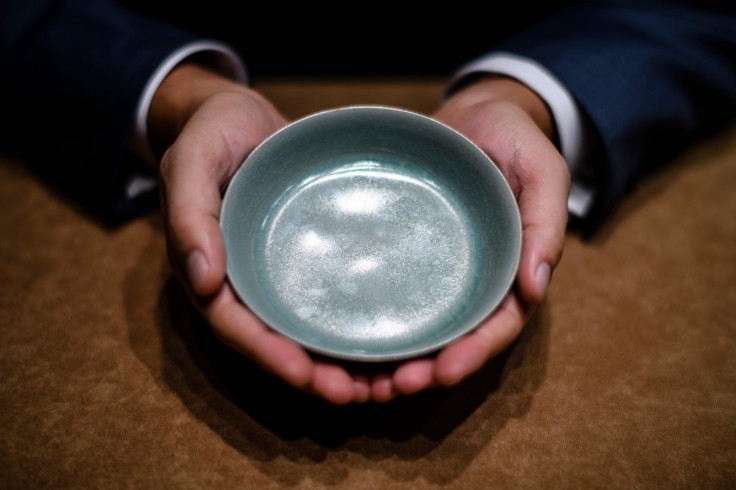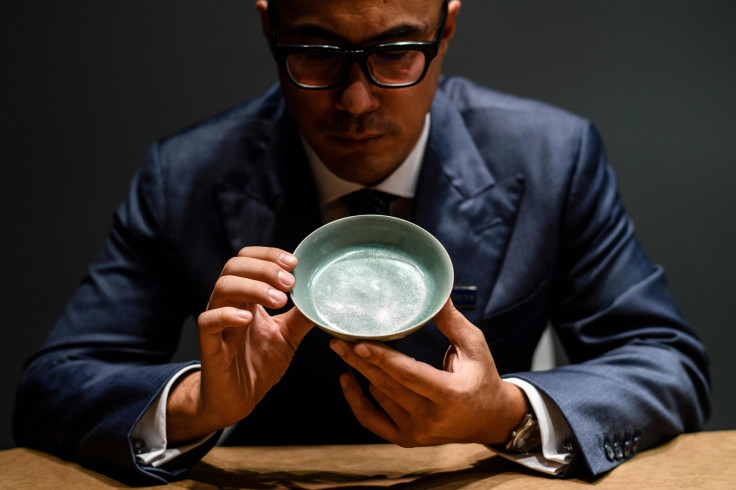Rare 1,000-Year-Old Chinese Bowl Breaks $38 Million Sotheby's Auction Record

A bowl that was used in China 1,000 years ago was auctioned off for $37.7 million on Tuesday, breaking a record for Chinese porcelain pieces, auction house Sotheby’s has reported.
The blue-green bowl was once used to wash brushes, Sotheby’s said when it announced the record-breaking sale on Twitter. The auction house describes the bowl in its catalog as “a highly important and extremely rare Ru guanyao brush washer,” referring to the “official ware” of China’s Northern Song dynasty, between the years 960 and 1127 AD.
“Ru ware is a part of China’s history, an emblem of China’s philosophy, a metaphor for China’s aesthetics — in short, an icon of China’s culture,” the auction house said. “The small and unobtrusive ceramic pieces are considered the epitome of the Chinese potters’ craft, but they are far more than just that, they have a significant story to tell. They can be considered the crowning glory of any collection of Chinese works of art, but they are and always were virtually unobtainable.”
These ceramics were only made for a period of about 20 years within the 11th century, adding to their rarity. They were fired in the central Henan province, regarded as the place where the ancient Chinese civilization began and the location where several ancient capitals were located.
In addition to their blue-green glaze, these ceramic pieces are also known for an “ice crackle” pattern. However, they can vary in their exact hue and how much of this “crackle” streaks across their surfaces.
According to The Guardian, the previous record for the sale of a Chinese ceramic piece was a small, white Ming dynasty wine cup painted with a rooster, hen and chicks that sold for about $36 million in 2014. It was made in the mid-1400s.
Bidding on the roughly 5-inch-wide brush-washing bowl lasted for 20 minutes on Tuesday in Hong Kong.
According to Reuters, the bowl makes the fourth known Ru piece that is privately owned, and one of just a handful of Ru pieces that have been auctioned off since 1940.
Sotheby’s lists those other auctioned pieces as including two other brush washers, a bottle, a basin and two dishes.
Apart from the now four Ru pieces that are privately owned, these antique ceramics are housed in museums.

This one came from the Chang Foundation in the Hongxi Museum in Taiwan, Reuters reported.
The winner was an anonymous bidder.
“We’ve had in last 20 years a huge sort of influx of mainland Chinese buyers,” Sotheby’s Asia deputy chairman Nicolas Chow told Reuters, and did not reveal the buyer’s identity or nationality. “We’re filling the room with new prices, new interest and that’s what’s really driven the price today.”
The Song dynasty is typically divided into Northern and Southern periods because while it began in the year 920, it did not incorporate the southern areas of the kingdom until the early 12th century. The dynasty then continued its rule through the year 1279.
The entire dynasty was known for its use of paper currency, for its large cities and for its artwork, particularly pottery.
© Copyright IBTimes 2024. All rights reserved.





















